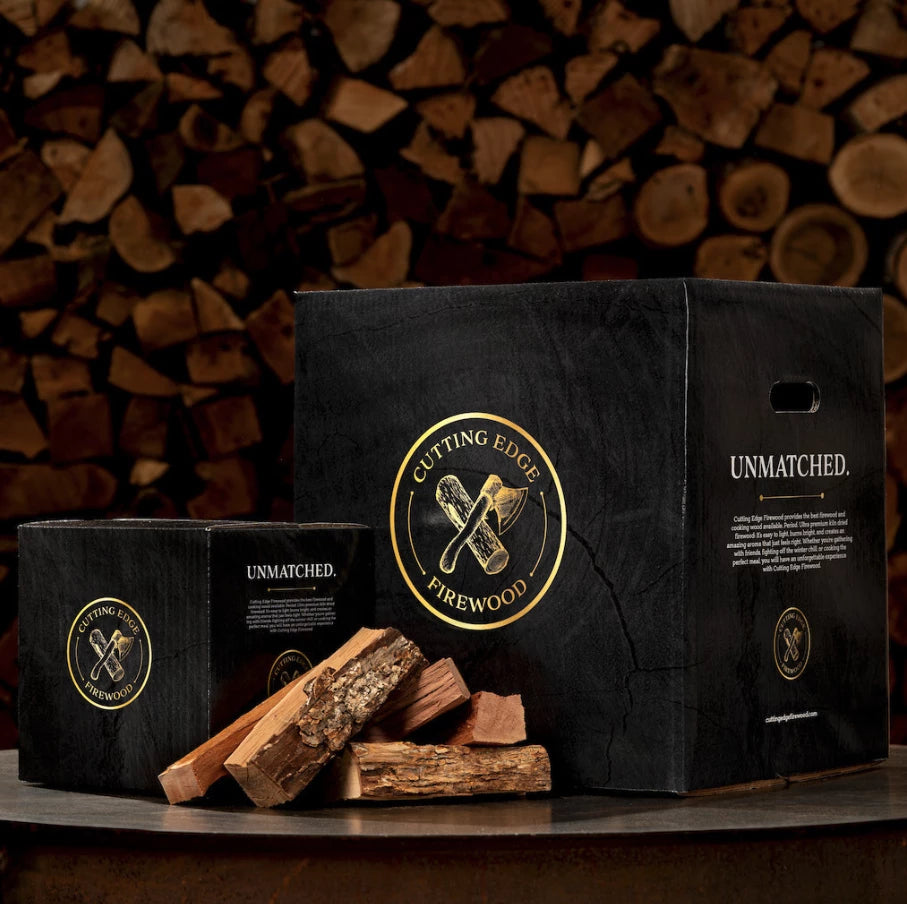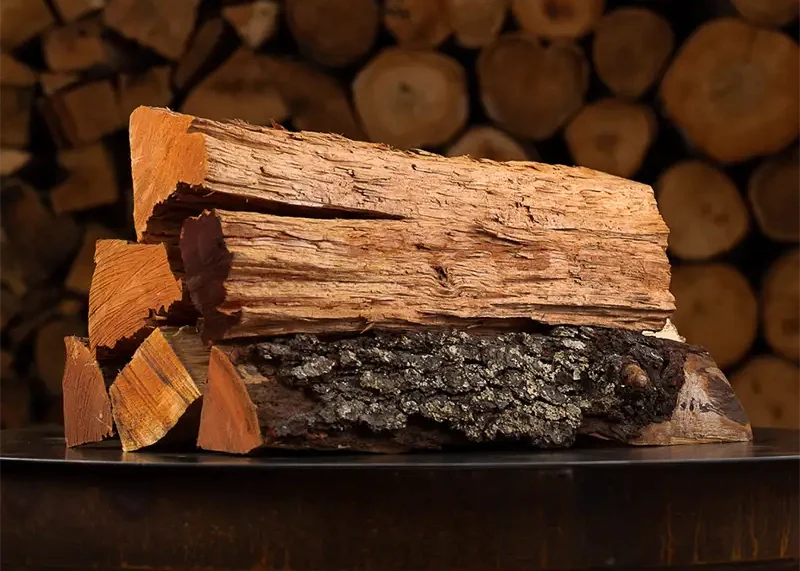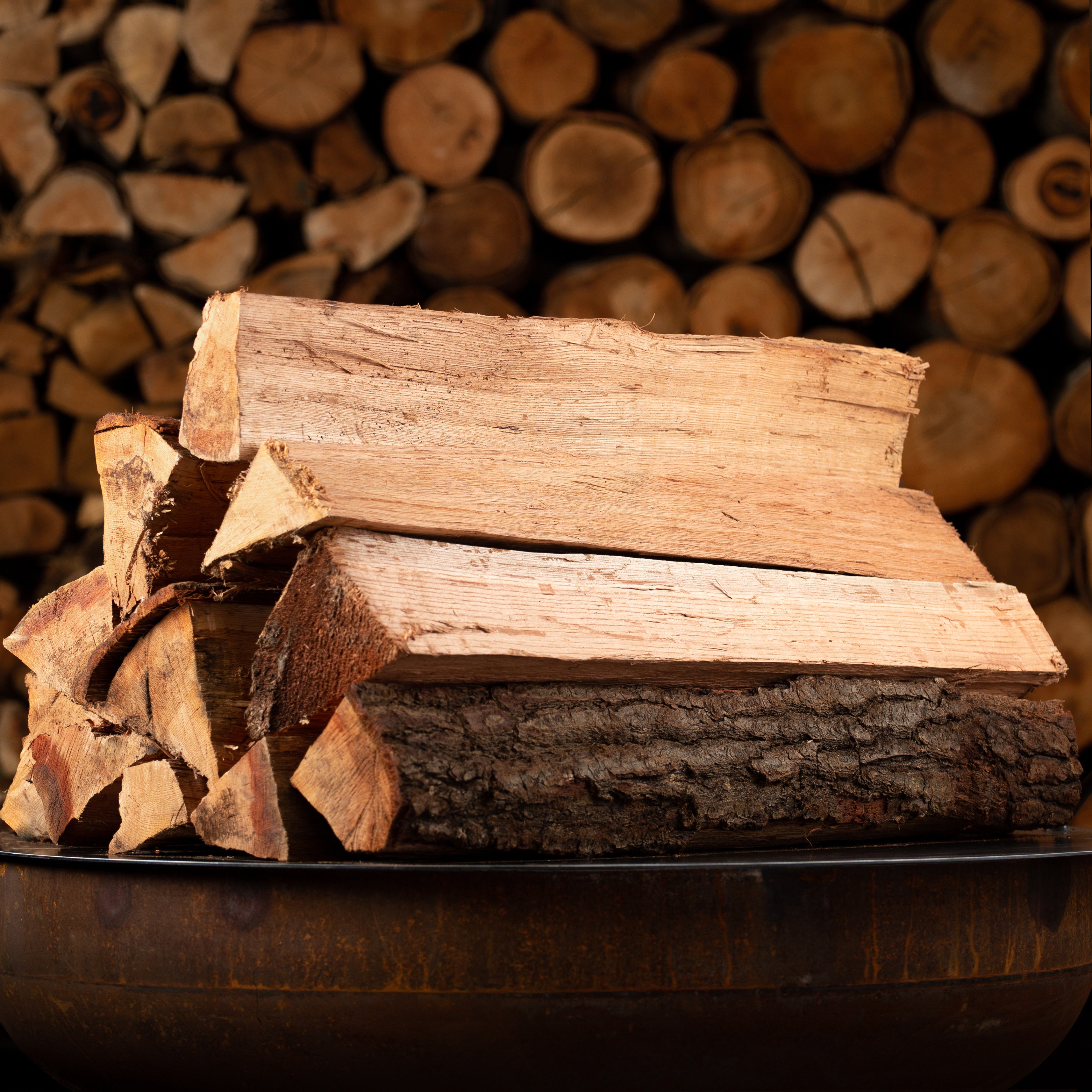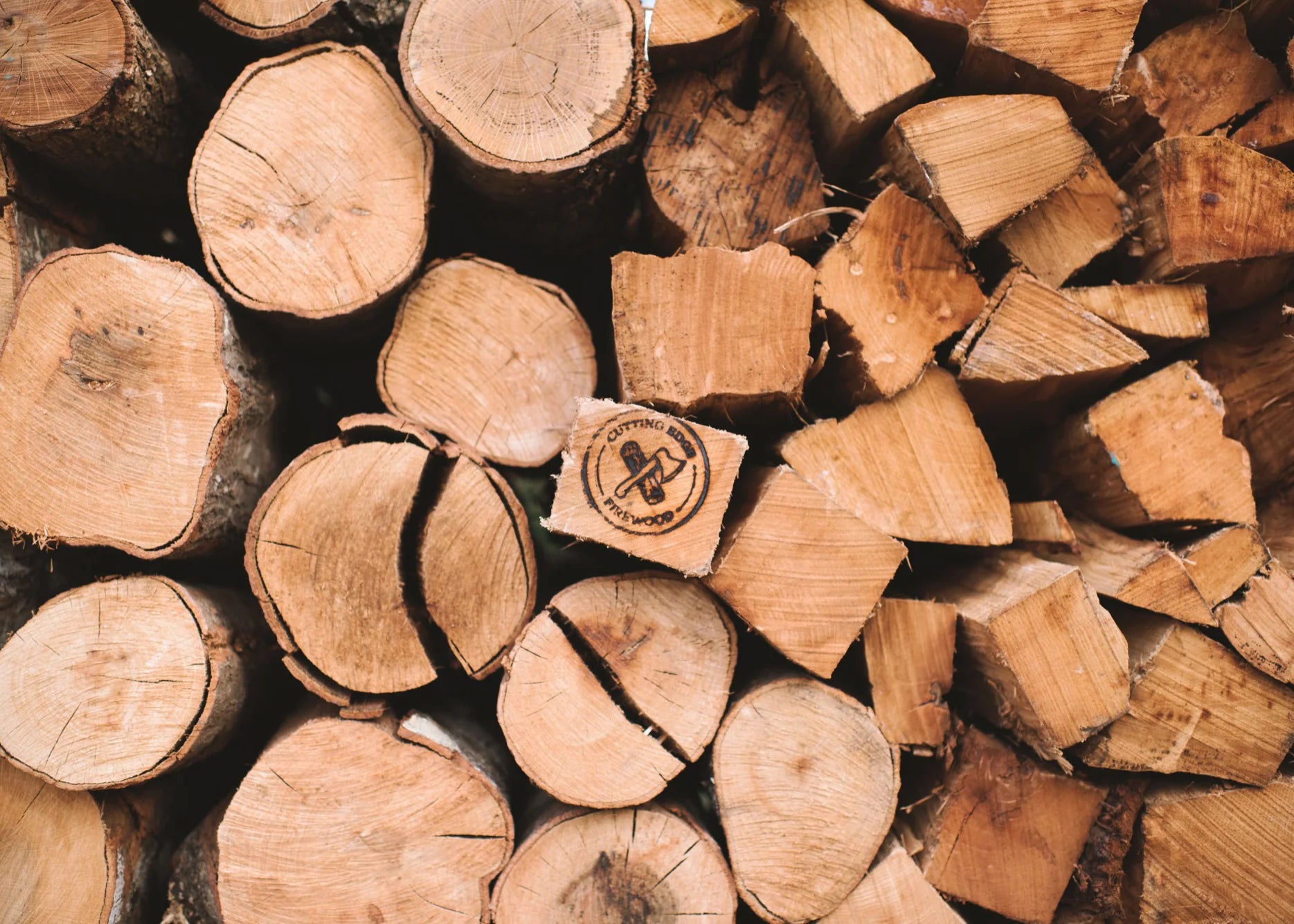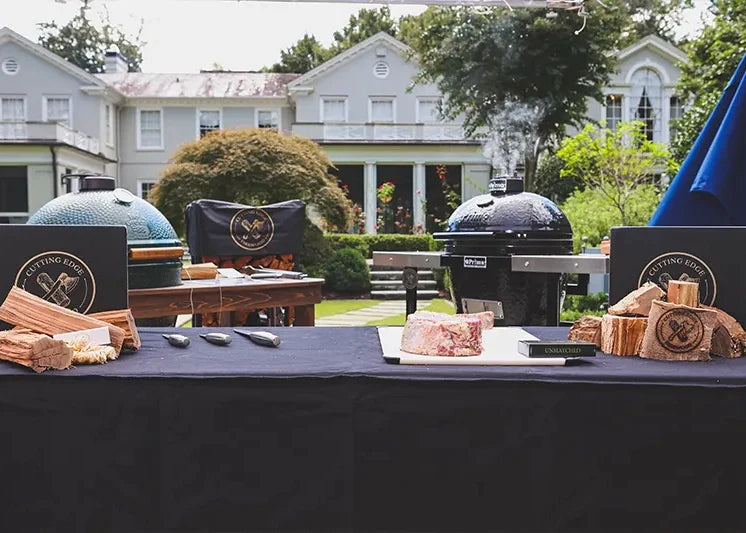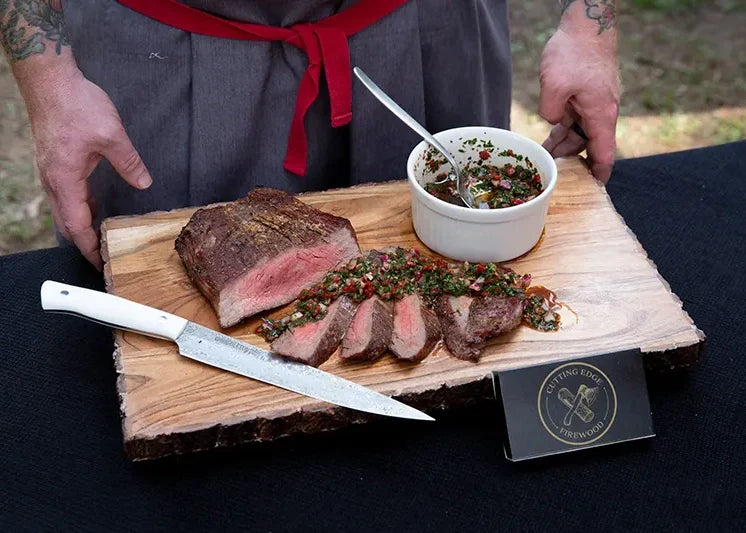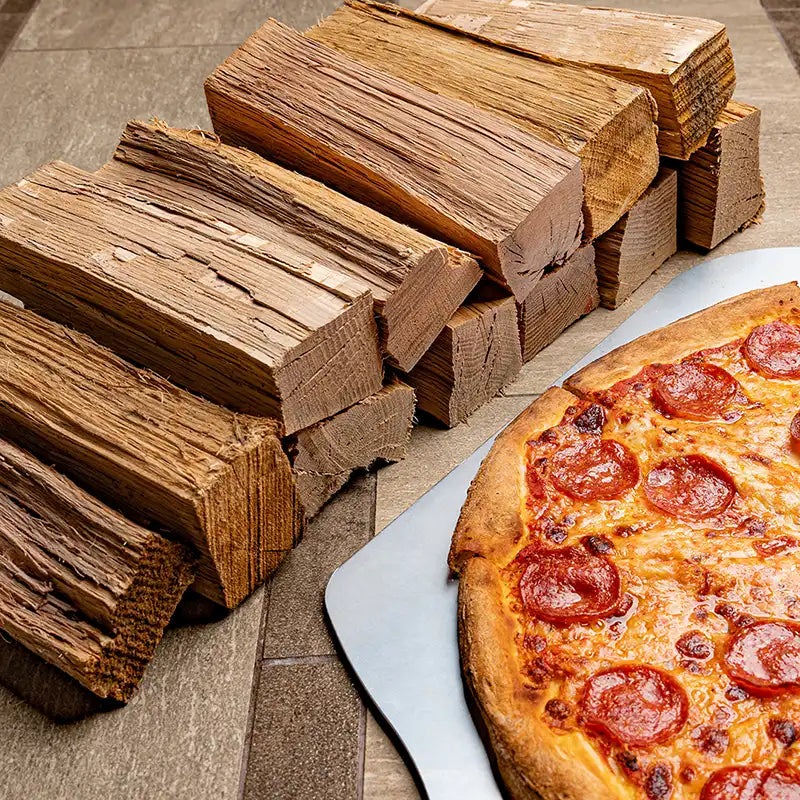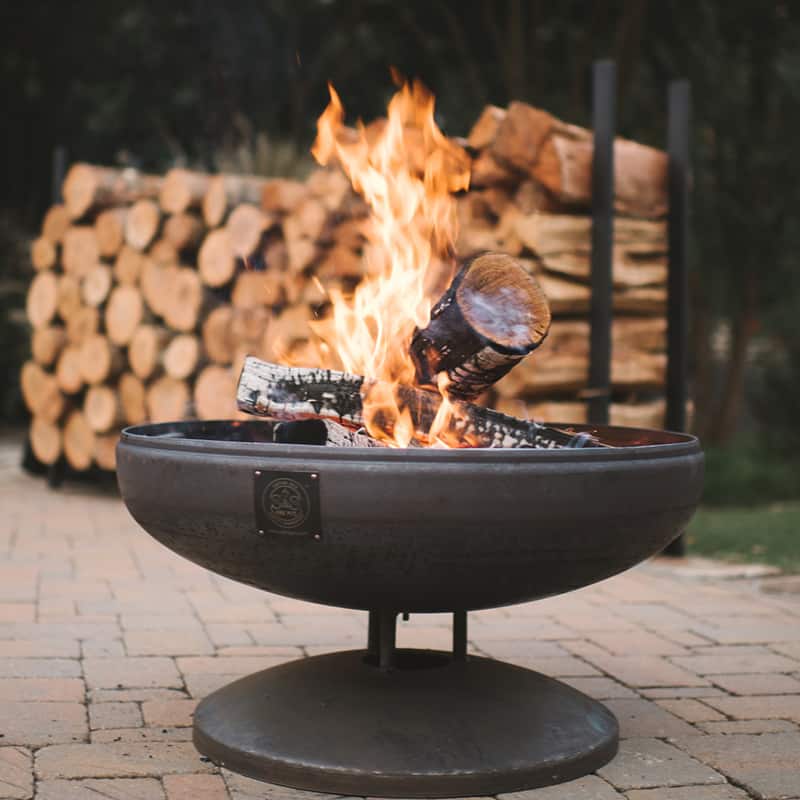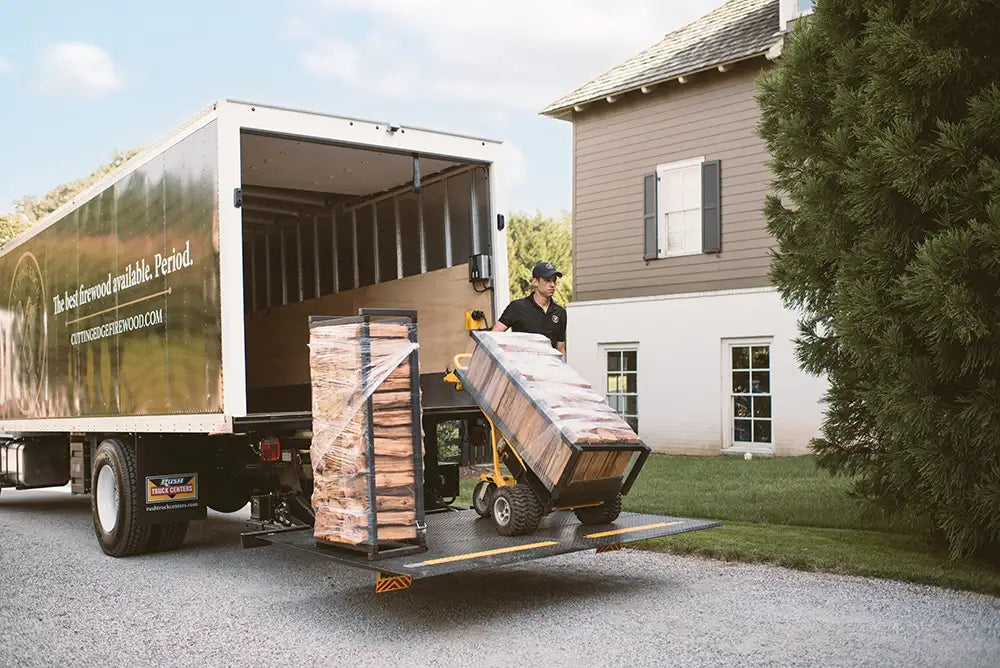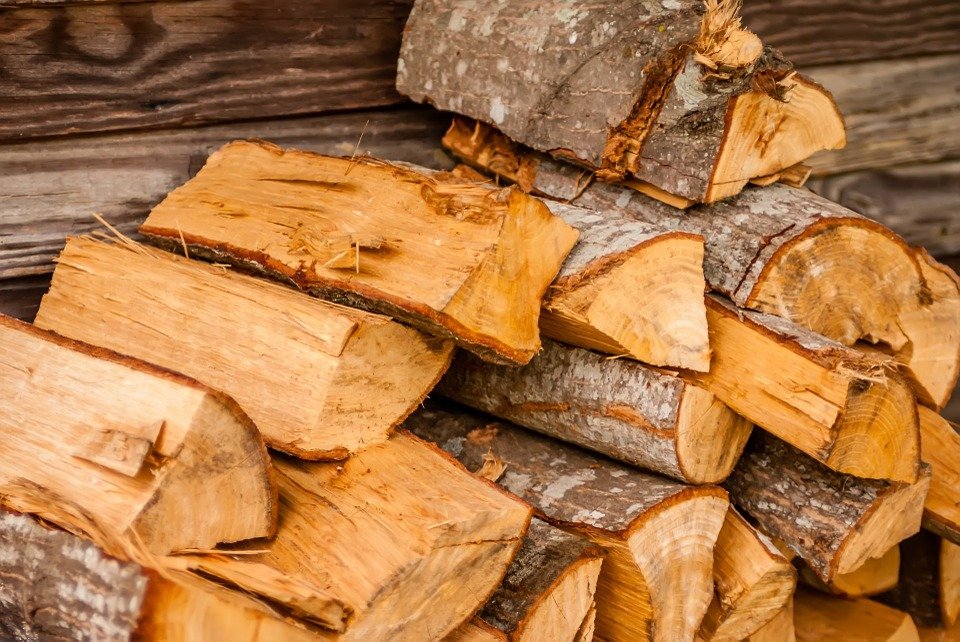When building a fire, one of the decisions you'll have to make is whether to use split firewood or whole logs. Both types of wood will burn to produce heat. As a result, you can use either of them to build a fire. With that said, there are several nuances between split firewood and whole logs. By familiarizing yourself with their differences, you'll be able to choose the perfect type of firewood for your needs.
Split Firewood vs Whole Logs: What's the Difference?
The term "split firewood" refers to whole pieces of wood that have been cut, or split, into multiple pieces. Whether it's a hardwood like oak or a softwood like pine, all trees have bark covering their exterior. You can think of bark like the skin of a tree. It serves as a protective barrier between a tree's interior and its surrounding environment. Without bark, trees would be vulnerable to dehydration, pests, fungal disease and extreme temperatures. Splitting firewood involves cutting whole logs -- typically along the grain -- so that they are only partially covered with bark.
There are different ways to split firewood, the most common of which include cutting whole logs with an ax or running them through an electric or gas-powered log splitter. Using an ax is obviously more laborious and time-consuming. Considering that log splitters can easily cost over $1,000, many people prefer to split their firewood with an ax.
Regardless, split firewood is simply whole wood logs that have been cut into multiple pieces. Although there are exceptions, most firewood is split into halves or quarters. To split a whole log into halves, the wood is cut down in the middle. To split a whole log into quarters, the wood is cut down the middle to create halves, after which each half is cut down the middle. Split firewood still contains some bark on the exterior, but it's not completely covered in bark like with whole logs.
Why Firewood Is Split
Firewood is split primarily to encourage faster drying. When a tree is first cut down and processed into several whole logs, it typically contains a high moisture content. In fact, the moisture content of fresh or green firewood can exceed 100%. At 100%, firewood contains half of its weight in water. All that moisture inhibits the wood's combustion process, resulting in more smoke and less heat. To increase its quality and performance, firewood must be dried.
Firewood is typically dried either via air drying or kiln drying. Air drying is an age-old drying method in which firewood is left outdoors for up to six months, during which the moisture inside its pores will evaporate. Kiln drying, on the other hand, is a newer and more advanced drying method in which firewood is baked in a special oven known as a kiln. Of those two methods, kiln drying is preferred because of its ability to achieve a superior level of dryness. According to the University of New Hampshire, (UNH), air-dried firewood has an average moisture content of 30%, whereas kiln dried firewood has an average moisture content of less than 20%.
Whether it's air dried or kiln dried, all firewood dries more quickly when it's split. As previously mentioned, bark protects trees against the loss of moisture. It acts as a membrane to prevent trees from losing moisture through evaporation. When firewood is split, there's less bark covering its exterior. In turn, moisture will evaporate more quickly out of it. Split firewood and whole logs can both be dried. However, it generally takes longer to dry whole logs than it does to dry split firewood.

Split Firewood Is Easier to Light
You might be surprised to learn that split firewood is easier to light than whole logs. Bark has natural flame-retardant properties, meaning it takes greater heat to ignite than plain wood. Bark essentially insulates the wood so that it doesn't heat up as quickly.
If you're building a fire using only whole logs, you may struggle to light it because of the bark's natural flame-retardant properties. This is particularly true if the whole logs have a high moisture content. The combination of bark fully covering the wood's exterior and a high moisture content can make it nearly impossible to ignite whole logs. By using split firewood, however, you'll have an easier time building and starting a fire. Split firewood typically contains just 50% or 25% of the bark -- depending on whether it was split into halves or quarters -- that's found on whole logs. And with less flame-retardant bark, it's easier to light.
Split Firewood Produces More Heat
Not only is split firewood easier to light; it produces more heat than whole logs as well. Bark has different properties than actual wood, including a lower density. The density of wood refers to its physical mass. With a greater density, split firewood has more "stuff" to burn than whole logs. Using only whole logs consisting mostly of bark won't produce much heat, assuming you're even able to light it.
For maximum heat, it's recommended that you use split firewood. Split firewood contains more organic fuel that, when ignited, will be converted into heat. If heat isn't a concern, you can always build a fire with whole logs. But if you're hoping to create a warm and comfortable environment -- either inside your home or outside your home -- you should use split firewood. Split firewood is easier to light and produces more heat than whole logs.

Burning Whole Logs: What You Should Know
While split firewood is easier to light and produces more heat, you can still use whole logs in your fires. With that said, there are a few things you should know when using whole logs in a fire. If you're struggling to start a fire using whole logs, consider starting it with split firewood. After building a small fire with split firewood, you can then add a few whole logs to it.
It's also important to choose high-quality whole logs with a low moisture content. You shouldn't burn just any whole logs. Unless a whole log has been dried, it will likely contain an excessive amount of moisture. The high moisture content prevents the wood from burning completely. Not all whole logs suffer from a high moisture content, though. Like split firewood, whole logs are often air dried or kiln dried to achieve a lower moisture content.
Whole logs actually burn for a longer period than split firewood. We've already talked about how bark has natural flame-retardant properties. Because whole logs contain more bark than split firewood, they burn more slowly. No piece of wood will burn forever. Nonetheless, whole logs usually burn for a longer period than split firewood.
The bottom line is that you can burn either split firewood or whole logs, assuming the wood is dry. Split firewood is typically easier to light and produces more heat, making it preferable among many homeowners. Whole logs, on the other hand, burn for a longer period. Just remember to choose high-quality wood with a low moisture content to achieve the best heat and performance.
Stock up on premium kiln dried firewood by visiting our online store today. We offer a variety of kiln dried firewood, including oak, hickory and more.

